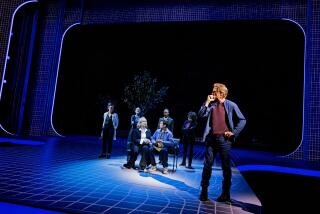Noisemakers in the Age of Distraction
NEW YORK — An act of vandalism occurred at the Metropolitan Opera recently, during the season’s last performance of Strauss’ “Der Rosenkavalier.” As Renee Fleming began the final trio in a silken, ethereal pianissimo, and as the opera’s strands of wisdom and buffoonery began to sort themselves out . . . a cell phone rang, shearing the fragile fabric of sublimity.
It’s become an almost daily barrage of noise. Ringing cell phones scarred a Bach recital by the pianist Andras Schiff and, a few days later in the same hall, a performance of Shostakovich by the Emerson String Quartet. Presenters, wary of taking a hectoring tone with their patrons, have so far suffered the noise in silence and so, with rare exceptions, have artists. During the hall’s opening night last season, Michael Tilson Thomas was busy eulogizing Gershwin before stepping up to the podium when a phone began to burble.
“I told you never to call me here,” said the nimble conductor. Carnegie Hall began inserting into the program a politely worded request to switch off electronic devices. It has had very little effect.
Broadway theaters have resorted to making a firm announcement before the curtain goes up. But even that unpleasant bit of knuckle-rapping is hardly foolproof. When “The Lion in Winter” was in previews last season, a cell phone chimed in as the play reached a climax, ringing incessantly until Laurence Fishburne snarled: “Answer the . . . phone.”
*
To receive a cell phone call during a performance is an act of violence, not terribly different from aiming a spray gun at a Botticelli. It’s worse, in fact, since a damaged painting can be restored. The Met will bring back “Rosenkavalier,” and perhaps even that same cast, but those hours had a particular, fragile luminosity, and as they slip into the past, the memory of their perfection is inseparable from the blemish.
Even when no cell phone goes off, the mere knowledge that a high percentage of the audience is packing the dangerous gizmos is enough to inject an intolerable dose of anxiety into the experience of live performance. Musicians and actors have to train themselves to work through piercing distraction, and audiences can no more relax than a visitor to a museum could sink into serene contemplation in the company of a jumpy weirdo with a switchblade.
The communications industry, meanwhile, has taken stock of the cell phone’s intrusiveness and decided it can be used as a sales pitch. One current television spot shows a grotesquely Teutonic operatic performance being interrupted by a ringing phone. The horned and breast-plated soprano hurls her spear at the offending communicant, and the audience applauds. It’s not a public service message, though: The camera pans to another, supposedly more civil, nonlistener, who keeps in touch at the opera by sending noiseless e-mails.
*
What the commercial makes clear is that ringing phones are not a confined epidemic but one symptom of a generalized refusal to concentrate. We are all multitasking, and simply sitting in silence seems hopelessly un-interactive. Unless we cough, murmur or beep, how will the world know we’re there?
Art tends to respond to the uses the public makes of it, and already it has developed techniques to cope in the Age of Distraction. Oliver Stone’s opera-length movie “Any Given Sunday,” for instance, never gives the mind a chance to wander, slapping it back to attention with a constant assault of jump cuts and a high-impact soundtrack loud enough to be coercive.
In the concert hall, some composers have been filling the demand for blandly unassertive orchestral works that will not excessively disturb the audiences’ meandering thoughts. But others--Thomas Ades, for example--have developed a style of skittering, wheeling, mercurial music that challenges the ears to keep up. The question is, how long before audiences develop the capability to ignore that too?
More to Read
The biggest entertainment stories
Get our big stories about Hollywood, film, television, music, arts, culture and more right in your inbox as soon as they publish.
You may occasionally receive promotional content from the Los Angeles Times.










